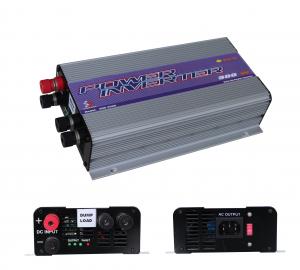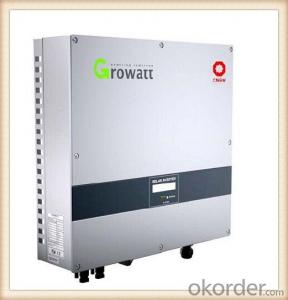Mpp Solar Grid Tie Inverter
Mpp Solar Grid Tie Inverter Related Searches
Led Light Bulbs For Ceiling Fixtures Led Lamps For Ceiling 42 In Ceiling Fan With Light Parts For Light Fixtures Light Projector For Christmas Grill With Led Light Bar Hanging Lights For Kitchen Bar Ceiling Lights For Sitting Room Ceiling Brackets For Lights Ceiling With Led LightsHot Searches
Aluminium Wire Mesh Manufacturers India Ceiling Fan Lowest Price Aluminium Scaffold Planks Sale Aluminium Walkway Mesh Prices Aluminum Bar Stock For Sale High Mast Light Price List Solar High Mast Light Specification High Mast Light Specification 6061 Aluminum Bar Stock Price Aluminum Bar Stock Price Stage Light Price Solar Inverter Fault Light Led Light Manufacturers Aluminum Round Bar Stock Sizes Aluminum Round Bar Stock Near Me Ceiling Fan Lowest Price Aluminum Flat Bar Stock Near Me Aluminum Bar Stock Sizes Aluminum Bar Stock Suppliers Aluminum Bar Stock Near MeMpp Solar Grid Tie Inverter Supplier & Manufacturer from China
Okorder.com is a professional Mpp Solar Grid Tie Inverter supplier & manufacturer, offers integrated one-stop services including real-time quoting and online cargo tracking. We are funded by CNBM Group, a Fortune 500 enterprise and the largest Mpp Solar Grid Tie Inverter firm in China.Hot Products
FAQ
- The role of a solar inverter in voltage control is to convert the direct current (DC) produced by solar panels into alternating current (AC) that is suitable for use in homes and businesses. Additionally, a solar inverter helps regulate and stabilize the voltage levels to ensure that the generated electricity matches the required voltage for the connected electrical appliances. This helps prevent overvoltage or undervoltage situations, ensuring a safe and efficient energy supply.
- The common troubleshooting steps for a malfunctioning solar inverter include checking the display for error messages, inspecting the DC and AC connections for loose or damaged wires, verifying the input voltage and frequency, resetting the inverter, and monitoring the system for any unusual behavior. If these steps do not resolve the issue, it is advisable to consult a professional or contact the manufacturer for further assistance.
- Yes, a solar inverter can be used with different types of grid connection standards. Solar inverters are designed to convert the direct current (DC) generated by solar panels into alternating current (AC) that can be fed into the electrical grid. They are manufactured to comply with various grid connection standards and regulations, allowing them to be compatible with different types of grids worldwide. This flexibility enables solar inverters to be used in a wide range of countries and regions with varying grid connection requirements.
- Maintaining the stability and reliability of the electrical grid heavily depends on the crucial role of a solar inverter in voltage and frequency regulation during grid disturbances. To regulate and stabilize the electrical parameters, the solar inverter acts as a control device during grid disturbances like voltage fluctuations or frequency deviations. Regarding voltage regulation, the solar inverter constantly monitors the grid's voltage level and adjusts its output accordingly. It decreases its output if the grid voltage increases to avoid overvoltage conditions. Conversely, if the grid voltage decreases, the inverter increases its output to compensate and maintain a stable voltage level. This regulation guarantees that the solar inverter's voltage aligns with the grid's requirements, preventing harm to electrical equipment and ensuring the grid's safe operation. Similarly, the solar inverter also contributes to frequency regulation during grid disturbances. It continuously monitors the grid's frequency and adjusts its output frequency to match it. If the grid frequency deviates from the standard frequency, the inverter modifies its output frequency to bring it back to the desired level. This frequency regulation is vital to keep various electrical devices connected to the grid synchronized, preventing equipment damage, and ensuring the grid's stability. In summary, the solar inverter's role in voltage and frequency regulation during grid disturbances is to provide stability and reliability to the electrical grid. It acts as a control device that constantly monitors and adjusts its output to maintain the desired voltage and frequency levels. This ensures the prevention of potential damage to electrical equipment and guarantees the smooth operation of the grid.
- The maximum input voltage that a solar inverter can handle varies depending on the specific model and manufacturer. However, in general, most solar inverters can handle input voltages in the range of 600 to 1000 volts DC.
- The role of a solar inverter in a utility-scale system is to convert the direct current (DC) electricity produced by the solar panels into alternating current (AC) electricity that can be fed into the utility grid. It also ensures the maximum power output of the solar panels by tracking the maximum power point. Additionally, the inverter provides grid synchronization and protection functions to ensure the safe and efficient operation of the utility-scale solar system.













































